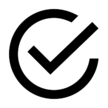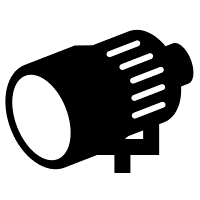|
This newsletter has been sent to all authorized representatives on each BHH services team. Please forward to other BHH services staff at your organization.
 |
|
News, programmatic updates, and useful information. |
This is a time of unprecedented challenges and we recognize the tremendous work being done by frontline healthcare, behavioral health, and social services providers and those caring for others. We also realize that this situation is difficult for everyone. Both the Centers for Disease Control (CDC) and the Minnesota Department of Health (MDH) have resources for Managing Stress and Anxiety during the pandemic, Taking Care of Your Emotional Health, and Behavioral Health and Emergency Preparedness for healthcare responders, parents and caregivers, teens, kids and families.
Policy Updates
The BHH services team is continuing to work to obtain a waiver for face-to-face requirements. We will update BHH services providers regarding approval.

Highlights from the front lines
|
Many providers and organizations have adapted, implemented innovative ideas, and overcome obstacles to ensure continuity of BHH services during the COVID-19 pandemic. Thank you to all who shared their responses to the question “In what ways has your organization adapted your program to continue to provide BHH services and supporting the people you serve in response to the COVID-19 pandemic?”
Vail Place
Vail Place put together an addendum to their Consent to Services document that they provide verbally or virtually to individuals receiving services, as well as for new referrals. This document is posted on their website and they can mail it upon request. You can see an example at this link: Vail Place Consent to Services Addendum. The addendum addresses video calls, releasing information with verbal consent for care coordination following the Health and Human Services (HHS) recommendations, how they will acquire signatures when face-to-face interaction resumes, and more.
Vail Place has implemented video conferencing options for individuals receiving services. They also provide telephonic services for individuals unable to participate in video conferencing, and they document in the record when circumstances don’t allow for video calls.
When it comes to BHH services, the Vail Care team meets virtually on Microsoft Teams twice a week. On Mondays, the team meets for two hours to review client situations, solve problems, identify resources and so on. On Thursdays, the team checks in to ensure good communication and oversight. In addition, team members reach out frequently (often daily) by phone when questions arise. The Vail Care team is also monitoring when individuals have COVID-19 symptoms. For example, one of the systems navigators alerted integration specialist, Julie Plante, RN, that a person receiving BHH services had symptoms. Julie called to check on the person and reviewed the information the person received from their primary care clinic and provided additional tips and support to the individual.
People Inc.
At this time, People, Inc. is not providing services face-to-face unless absolutely necessary. They are utilizing tele-video platforms such as Teams, FaceTime or Duo for virtual meetings and they are connecting with many people by phone. They also provide no-contact drop-offs if an individual is in need of food, medications, or other necessities.
For BHH services, they are scheduling tele-video or telephonic intake meetings with new referrals, mailing or emailing all of the intake paperwork including the Notice of Eligibility and the BHH Rights, Responsibilities and Consent form, and documenting verbal consent while they wait for a hard copy to be returned. The team feels it is important to maintain services for people who are reaching out for extra support during this stressful time. They continue to modify their practices as they receive policy guidance.
Nystrom
Nystrom has modified their processes to accept forms electronically. They use the program IntakeQ to collect forms through their website. They send IntakeQ the forms to be made available online. IntakeQ then formats the fillable forms that individuals can complete and send back securely. The form is then available in a queue for Nystrom to export into their electronic health record. For more information about IntakeQ, you can visit the IntakeQ website.
Western Mental Health Center
Western Mental Health Center (WMHC) in southwestern Minnesota continues to deliver BHH services in different ways to respond to the changes presented by the COVID-19 pandemic. When individuals receiving BHH services indicated that they wanted to continue services face-to-face, WMHC worked to provide in-person visits while still maintain physical distancing measures. They discuss how some people have mentioned that they feel uncomfortable with using teleconferencing platforms to complete their face-to-face visits, they face technological barriers and several really appreciate the in-person contact.
Kathleen Kesteloot describes how she started bringing a lawn chair in her car to be able to sit outside with a person and complete a visit. Another thing that has made these visits easier is how some apartment complexes have designated picnic areas for visits. The team describes these in-person meetings as a chance to connect and get a sense of the person’s overall well-being. WMHC BHH services team does offer visits via teleconference for people that would like them as well.
Thank you BHH services providers for sharing your responses with us! We would love to hear more. We encourage providers to reach out and support each other, share ideas and resources, and collaborate in any way possible.

Information related to the use of commercial tobacco products, and how to help people address their use of them.
|
Did you know that, according to the American Lung Association, tobacco use is the number one cause of death in people with mental illness? Not only that, but it affects people with mental illness at alarmingly disparate rates compared to the general population. This section will provide ongoing information related to commercial tobacco products and how to help people address their use of them.
A message from the Lung Mind Alliance: COVID-19: Tobacco Use as a Prominent Risk Factor for Contracting the Virus.
Never has it been more important for commercial tobacco users to have access to quitting resources, so they may possibly reduce their risk of serious complications if exposed to the virus. It is known that smoking increases the risk for respiratory infections, weakens the immune system, and causes many chronic diseases. Thus history of smoking is one of the main risk factors for COVID-19, and it is likely that vapers are also at a greater risk. It has never been more important to educate clients on their increased risk, provide treatment, and support them in protecting their health by encouraging them to avoid the use of tobacco products, including e-cigarettes because the behavioral health population is disproportionately impacted by commercial tobacco use.
Contact the Lung Mind Alliance for support if your organization is interested in addressing tobacco use among your staff and the people you serve. https://www.lung.org/local-content/mn/lung-mind-alliance
Introducing Quit Partner
On April 1, 2020, the Minnesota Department of Health launched Quit Partner, Minnesota’s new commercial tobacco cessation program, offering free quit-tobacco services to Minnesota residents. Starting April 1, any Minnesotan looking for free support to quit smoking, vaping or chewing can be directed to Quit Partner at 1-800-QUIT-NOW or online at quitpartnermn.com. Free support includes personalized coaching, email and text support, educational materials, and quit medication (nicotine patches, gum or lozenges) delivered by mail. Quit Partner offers specialized programs for people living with mental illnesses or substance use disorders, American Indian communities (American Indian Quitline), pregnant and post-partum women, and youth ages 13-17 (My Life, My Quit™).
Free tobacco cessation help for Minnesotans was previously offered by QUITPLAN services, which stopped enrolling people after March 31, 2020. However, anyone enrolled in QUITPLAN prior to April 1 will be able to continue and finish their current QUITPLAN program.
 |
|
Important dates specific to BHH services |
Building Systems for Culturally Responsive Integrated Care
Friday, May 15, 2020, 10:00 a.m. – 11:15 a.m. (ZOOM Meeting)
Session #5: Using Data to Reduce Disparities and Improve Quality
Contact Traci Warnberg-Lemm via email at Traci.Warnberg-Lemm@state.mn.us to register.
Improving Cultural Competency for Behavioral Health Professionals
A free e-learning program designed to help behavioral health providers build knowledge and skills related to culturally and linguistically appropriate services (CLAS). You can register for the program here: Improving Cultural Competency for Behavioral Health Professionals.

Information on upcoming learning opportunities and available resources that may be helpful for BHH services providers.
|
We know information is changing quickly and there is a lot of incorrect information going around about COVID-19. Here are the best places to find accurate information:
Updates on MDH Multilingual Resources for COVID-19
- The basic MDH overview of COVID-19 is now available in 20 languages. (French, Khmer, Korean, Nepali, Pashto, Swahili, Tagalog, and Ukrainian were added to the existing languages since our last update.)
- The one-page Health Care Resources document tells how to access health insurance and low-cost clinics. (Created by MDH with input from MNsure and DHS available in 20 languages).
- A reminder that MDH now has COVID-19 pages in: Hmong, Somali and Spanish. The websites have basic information on COVID-19 as well as links for materials, all in the target language.
COVID-19 Public Hotline: Questions about COVID-19?
- Health questions: 651-201-3920 or 800-657-3903, 7:00 a.m. to 7:00 p.m.
- Schools and child care questions: 651-297-1304 or 800-657-3504, 7:00 a.m. to 7:00 p.m.
- Interpretation services are available.
Community Resources
- People who need assistance finding food, paying housing bills or other essential services can dial 2-1-1, 651-291-0211 or 800-543-7709, or Text “MNCOVID” to 898211 for help to locate available resources in the person’s area. You can also access the 2-1-1 webpage here: Coronavirus Resources and Information
- Below are some resources for internet and computer access:
- Comcast has made their Internet Essential program free to new low-income customers for two months. To sign up, applicants can simply visit internetessentials.com. The accessible website includes the option to video chat with customer service agents in American Sign Language. There are also two dedicated phone numbers: 855-846-8376 for English and 855-765-6995 for Spanish.
- Use EveryoneOn to find low-cost internet and affordable computers in your area. EveryoneOn also includes resources for schools to help students stay connected while at home.
- In the City of Minneapolis, USI Wireless has opened their WiFi network for people who may need temporary internet access. You can find more information at: Wireless Minneapolis.
- The Washington Office of Refugee & Immigrant Assistance has developed a COVID-19 Translated Resources Directory that contains a list of translated COVID-19 health education resources in multiple languages.
- The Center for Health Care Strategies, Inc. has compiled resources aimed at lessening the impact of COVID-19 on Medicaid populations, particularly those at the highest risk. You can access this library of guidance, reference materials and tools at Addressing the Needs of Medicaid Populations During the COVID-19 Pandemic.

Building collaborative relationships with other providers to address whole-person care & promote service sustainability
|
Health Care Coalitions (HCCs):
Minnesota has eight established HCCs led by a Regional Health Care Preparedness Coordinator (RHPC) and an established advisory committee. For more information about your region’s plan for emergency preparedness, connect with your respective HCC by referencing this HCC map and contact information.
During this time, there has been an increase in discrimination against and harassment of individuals who are perceived as Asian or of Asian descent. Governor Tim Walz launched the Discrimination Helpline to assist in the State’s efforts to protect the civil rights of all Minnesotans during the COVID-19 pandemic. The Discrimination Helpline will allow Minnesotans who experience or witness discrimination to report incidents directly to the Minnesota Department of Human Rights.
For more information, visit Minnesota Department of Human Rights: Discrimination Helpline.
Discrimination Helpline: 833-454-0148 Monday-Friday, 8:00 a.m. to 4:30 p.m.
The BHH services team asks you to join us in challenging bias and discrimination. The CDC provides guidance on reducing stigma and how to stop the spread of rumors. Visit the MDH COVID-19 materials page for even more resources.
Behavioral.Health.Home.Services@state.mn.us
|